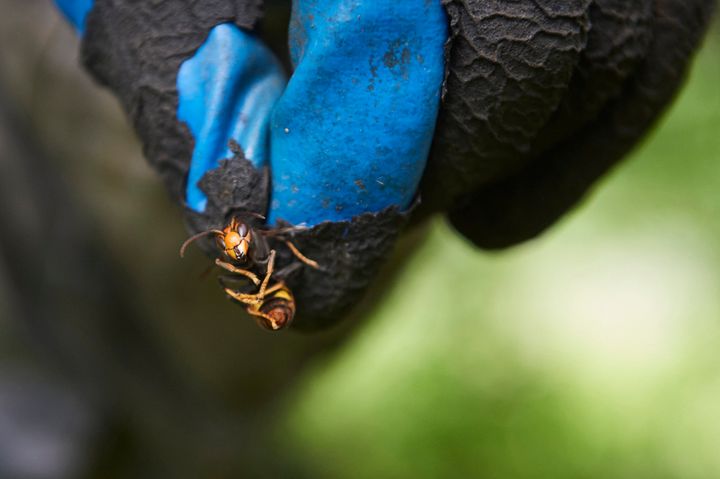
I swear I’m usually an insect apologist. The recent return of the yellow Sally stonefly, which was previously thought to be extinct in the UK? Sensational! Pleas to keep slugs alive in order to feed birds? Makes sense to me!
I draw the line, however, at potentially bee-decimating Asian hornets. The invasive species first made its way to the UK in 2016 and has been spotted around one or two times a year since (twice in 2021 and 2022, respectively).
That is, until 2023, where so far 22 verified sightings have occurred. And 15 of these have happened this month.
A gruesome video of the species devouring a native wasp in a Kent garden was released by The Independent last week. And since then, a large nest has been spotted in a derelict house in St Brelades, Jersey. It has since been destroyed.
So, we thought we’d share how the critter got to the UK, why it could cause destruction to local honeybees, its risk to humans, and what to do if you spot one.
The species isn’t any more harmful to humans than ordinary hornets
Like all hornets, they do sting – but they’re slightly smaller than the European hornet, and are no more harmful to humans.
Honeybees, however, ought to be concerned by their arrival. This hornet species first arrived in France in 2004 and has torn through local bee populations since.
Concerns that they will do the same in the UK have led experts to take extreme measures with the bug, radio tracking the beasties (especially on their Kent and Channel Isle strongholds) and destroying their nests.
Professor Adam Hart, an ecologist and conservation scientist from the University of Gloucestershire, told HuffPost UK that “numbers have risen but these hornets are still very rare here in the UK”.
“Their spread across Europe though shows us how rapidly that can change, which is why it is important to be on the lookout,” he added.
So far, the species has been seen mostly in Kent and the Channel Isles. The vast majority of confirmed 2023 sightings have been in Kent, accounting for 12 of the 15 confirmed cases this month.
What if I spot one?
Well, first of all, you should try to determine exactly what it is that you’re looking at.
Professor Hart told HuffPost UK that he has been sent roughly 50 messages from people worried about Asian hornets “and in every case the species was our native hornet or another species of social wasp”.
“Wasps are important in our ecosystem and we need to look after them, while being mindful of the potential harm the Asian hornet can cause. My main concern is that our native hornet species, which is a magnificent insect, or other wasps will be affected by people thinking they are Asian hornets,” he added.
So, in keeping with official advice, do not try to remove a suspected Asian hornet hive yourself.
The Asian hornet is slightly smaller than its European counterpart. The Wildlife Trust suggests Asian hornet queens are up to 30mm in length, with workers reaching up to 25mm on average.
The species has a black or brown thorax with “abdominal segments [that are] brown with [a] fine yellow band”.
“Only the fourth segment [is] almost entirely yellow-orange,” they say, and the species also has its signature black legs that appear to be dipped in yellow at the end.
If you spot one, you should report it immediately so the pros can take care of it. You can do this via the official Apple or Android Asian Hornet-tracking app, or you can contact alertnonnative@ceh.ac.uk with a photo.
You can also share suspected sightings through the non-native secretariat website or fill in this online form.